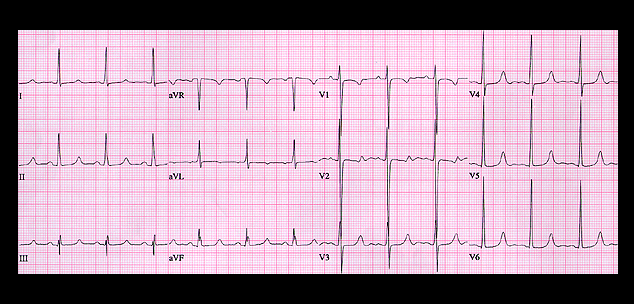
This ECG is from the same patient. It was recorded just after dialysis. At this time, her serum K+ had fallen to 5.1mM but the serum Ca++ remained low (7.9 mg/dl). The PR interval, QRS duration and T waves are now normal but the QT interval remains prolonged (460 msec) with a corrected QT interval of 500 msec.
